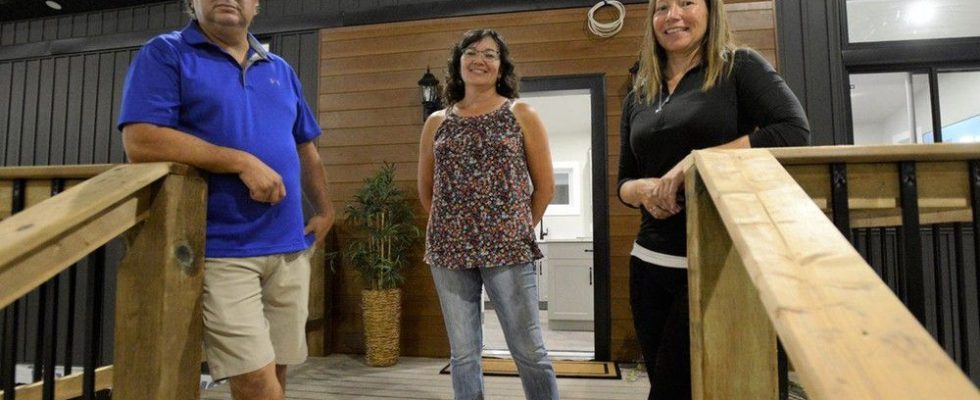
Six Nations is growing, but the housing stock is not keeping pace.
Advertisement 2
Multiple generations are packed into houses not built to hold them, while it can take over a decade to get into affordable housing.
Tiny homes could be part of the solution.
Six Nations of the Grand River Development Corporation (SNGRDC) has launched a pilot project to gauge the community’s interest in tiny homes, which are affordably priced, single-story prefabricated houses that range from 480 to 960 square feet.
An open house at the Oneida Business Park last week brought in an estimated 400 people to tour the one-bedroom and three-bedroom models on display.
“There were a lot of people here at noon waiting to come in,” designer Kali Hill said of an event that was scheduled to start at 2 pm
“They’re structurally sound and all to code,” Hill said of the tiny homes, which come fully inspected and with all electrical and plumbing installed.
Advertisement 3
The buyer arranges whether to install their new home either directly onto a foundation or atop a basement, and hooks it up to a water source.
Hill could see tiny homes appealing to seniors who want to downsize into a smaller house on the same property as their children and grandchildren, as well as students and young professionals who want to live on the reserve but cannot currently afford housing prices.

“A lot of people move off-reserve to find housing,” Hill said of an exodus to Hagersville, Brantford, Hamilton and beyond.
“They don’t want to leave the reserve, but they have to.”
Available land on Six Nations is mostly used for farming, Hill said, and any new rental homes or apartments are snapped up as soon as they are listed.
Advertisement 4
“Sixteen years on a waiting list to get into Ohsweken housing. And that’s if somebody decides to leave,” Hill said.
The aim is to price the tiny homes in the low six figures, which would be affordable to those who need a loan from Six Nations Housing to make the purchase.
“Our idea is to get (the price) within a range where they can buy the home and still have money left over” for the foundation and other associated costs, Hill said.
A proliferation of tiny homes on currently vacant land would turn those landowners into landlords and give them another source of income, she added.
That the homes are easy to maintain and inexpensive to heat and cool heightens the appeal.
“I heard a lot of people say, ‘Oh, I wouldn’t have to do a lot of cleaning.’ That goes a long way,” Hill said.
Advertisement 5
Another benefit for buyers is convenience, as the homes are delivered ready to be uninhabited, said construction supervisor Robert “Dude” Bomberry.
“We have access to contractors, so people don’t have to go subcontract out. It’s less stress for them,” he said.
“They can even come and see it as it’s being built.”
Despite the moniker, the homes are “not necessarily tiny,” Bomberry added, noting the larger model could comfortably house a family of four.
It takes four to six weeks of full-time work to build the smaller of the two homes, and eight to 10 weeks for the larger model. The plan for the pilot is to build six to eight homes per year, using local tradespeople and contractors.
“We’re trying to make it affordable for people to get themselves into a house,” Bomberry said. “It’s a need everywhere.”
JP Antonacci is a Local Journalism Initiative Reporter based at The Hamilton Spectator. The initiative is funded by the Government of Canada.

Comments
Postmedia is committed to maintaining a lively but civil forum for discussion and encourages all readers to share their views on our articles. Comments may take up to an hour for moderation before appearing on the site. We ask you to keep your comments relevant and respectful. We have enabled email notifications—you will now receive an email if you receive a reply to your comment, there is an update to a comment thread you follow or if a user you follow comments. Visit our Community Guidelines for more information and details on how to adjust your email settings.
Join the Conversation